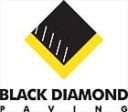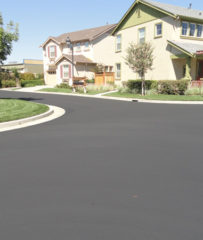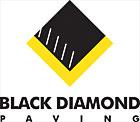Q: Why is one contractor’s bid priced more than another’s?
A: Differing bids are usually the result of a different range or type of work. Most contractors don’t take the time up front to find out what a customer really needs; they just make assumptions. This can result in very different scopes of work, which is reflected in the price. At Black Diamond, we take the time to listen and talk with customers to find out what their long-term needs are. Then, once we have a thorough understanding of what the customer wants to achieve, we submit a proposal that fulfills those goals at a fair price.
Q: Two contractors disagree on whether we should replace or overlay our existing pavement. Why the difference?
A: It may simply be a difference in professional judgment. One contractor may think an overlay will be fine and another might disagree, but it may be that one or both don’t fully understand what your needs are. They haven’t, for example, tried to determine the volume and weight of the traffic you receive. In some cases, an overlay may be perfectly satisfactory, and in others, the size and weight of delivery trucks may necessitate a complete replacement, costing more up front but saving money in the long run.At Black Diamond, we tend to bid conservatively, treating your money as if it were our own. If you plan on keeping the property, we’ll aim to save you money over the life of the pavement rather than giving you the lowest upfront cost. On the other hand, if you plan on flipping the property in a few years, we’ll deliver a lower upfront bid, saving you money. The key is to provide the service that’s right for you.
Q: How do I know Black Diamond is the right contractor for me?
A: Our proposal addresses your individual needs in detail, shows that we understand exactly what you need, and lays out our plan for delivery. We’re happy to sit down with you, even if that means coming out some evening to meet with the homeowners’ association board, to detail similar work we’ve done in the past and listen to your needs. These meetings usually turn into sessions where we ask as many questions of you as you do of us. They can be a key component in assuring we’ll be able to deliver on exactly what you need.
Q: Can you schedule the work to minimize disruption?
A: Absolutely. Paving work can be disruptive, reducing access to your business and making life difficult for residents, but we can work to make it as tolerable as possible. Sometimes, this means temporarily closing your business so we can work as fast as possible, allowing you to reopen quickly. Other times, it means breaking the project down into staggered sub-projects, so you can continue operating while we work. And we can adjust the schedule so, for example, we’re not shutting down the loading dock on Tuesday when you expect your big deliveries.
Q: What’s the difference between asphalt and concrete paving? Which is better?
A: Asphalt is aggregate with an oil binder. It’s flexible and will move, rising as a tree root pushes it up or sinking into a pothole as the ground underneath settles. Concrete is aggregate and cement. It isn’t flexible and only moves as a single slab once it’s set. Concrete is stronger and lasts longer, but it’s more expensive to install and maintain. Asphalt tends to be a more cost-effective solution for parking lots, roads and similar applications.
Q: What’s EuroPave? Isn’t it just gravel?
A: EuroPave is a decorative outdoor surfacing. It has many different applications; you can use it on the street, in building entrances, or in portions of the landscaping around a building. Unlike asphalt, which is basically rocks with an oil binder, EuroPave is decorative stone with a clear binder made from recycled glass. The binder is porous and water drains through it. It‘s used quite often in Britain and other parts of Europe, and you can see it at famous places like Hampton Court and the Eye of London. We recently did a beautiful project at a brand-new library in San Jose with blue recycled glass.
Q: What’s infrared paving?
A: Basically, it’s a method of patching asphalt to eliminate the joint between the new and old asphalt and extend the life of the patch. When you cut out a patch and simply repave it, you create a joint around the edges. This joint will eventually crack due to the different expansion and contraction rates of the new and old asphalt. Water will eventually seep in, undermining the surface and creating more cracks.With infrared paving, we reheat the asphalt around the patch back to its original temperature and add a rejuvenator to replace the oil that’s been stripped away over time. We just rake out the old asphalt and roll it back in with the new asphalt, essentially recycling it in place. This creates a patch without a joint. It’s also much less expensive, because we don’t have to bring in new excavation equipment.
Read moreRead Less






